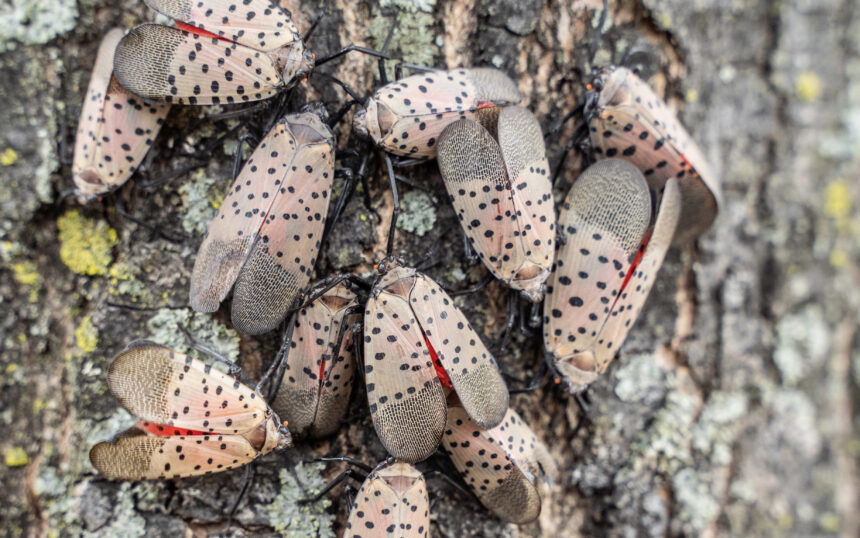Spotted lanternfly knocking at Missouri’s door

By Linda Geist
University of Missouri Extension
COLUMBIA, Mo. – University of Missouri Extension specialists say the spotted lanternfly (SLF) might appear in Missouri this summer.
MU Extension and Lincoln University urban entomologist Emily Althoff says SLF recently was found in Illinois. “It’s knocking at our door,” says Althoff.
First detected in the U.S. in 2014, SLF has now been confirmed in 18 states, according to the USDA Animal and Plant Health Inspection Service.
Its preferred host is tree of heaven (Ailanthus altissima), but SLF also attacks grapes, making it of particular concern to Missouri’s $4.2 billion wine and grape industry. Early detection and insecticide control will be key to reducing economic damage, says Dean Volenberg, viticulture specialist and director of the Missouri Grape and Wine Institute.
“If allowed to spread, SLF could have a devastating effect on Missouri fruits, including grapes, and ornamental and forest industries,” Volenberg says. “Public awareness will be critical in detecting and controlling this invasive pest to prevent economic and ecologic losses.”
It likely will appear in Missouri vineyards July to December, says Althoff. This is when those in agriculture should inspect equipment for this insect, which hitchhikes on metal objects such as trains and vehicles.
Volenberg says there is no pattern to the spread of SLF on the emerging infestation front because of the way it travels on moving vehicles. “It’s a scattershot,” he says.
A distinguishing feature of the SLF is a piercing-sucking mouthpart for penetrating the plant’s phloem to withdraw the sugary sap. When feeding, SLF leaves behind a sticky, oozing residue called honeydew. This substance attracts other insects, causes mold growth and further hurts plants.
In the fall, adult SLF are often mistaken for moths, says Althoff. They have gray forewings with distinctive black spots and wing tips with reticulated black and gray blocks.
They’re easiest to spot at dusk or at night as they move up and down the trunks of plants. During the day, they tend to cluster near the base or canopy of a plant, making them harder to see.
If you see a spotted lanternfly, capture it if you can. Take a photograph of it and email it to emilyalthoff@missouri.edu. Or collect a specimen and put it in a vial filled with alcohol to preserve it and take it to the nearest county extension center. Attach a note with the date and location it was found. GPS coordinates are helpful. The extension center will send it to Althoff, who will track its spread in Missouri. If you cannot capture it via phone or vial, then you may kill it.
Use caution when handling tree of heaven; its sap can cause headaches, nausea and possible heart problems.



